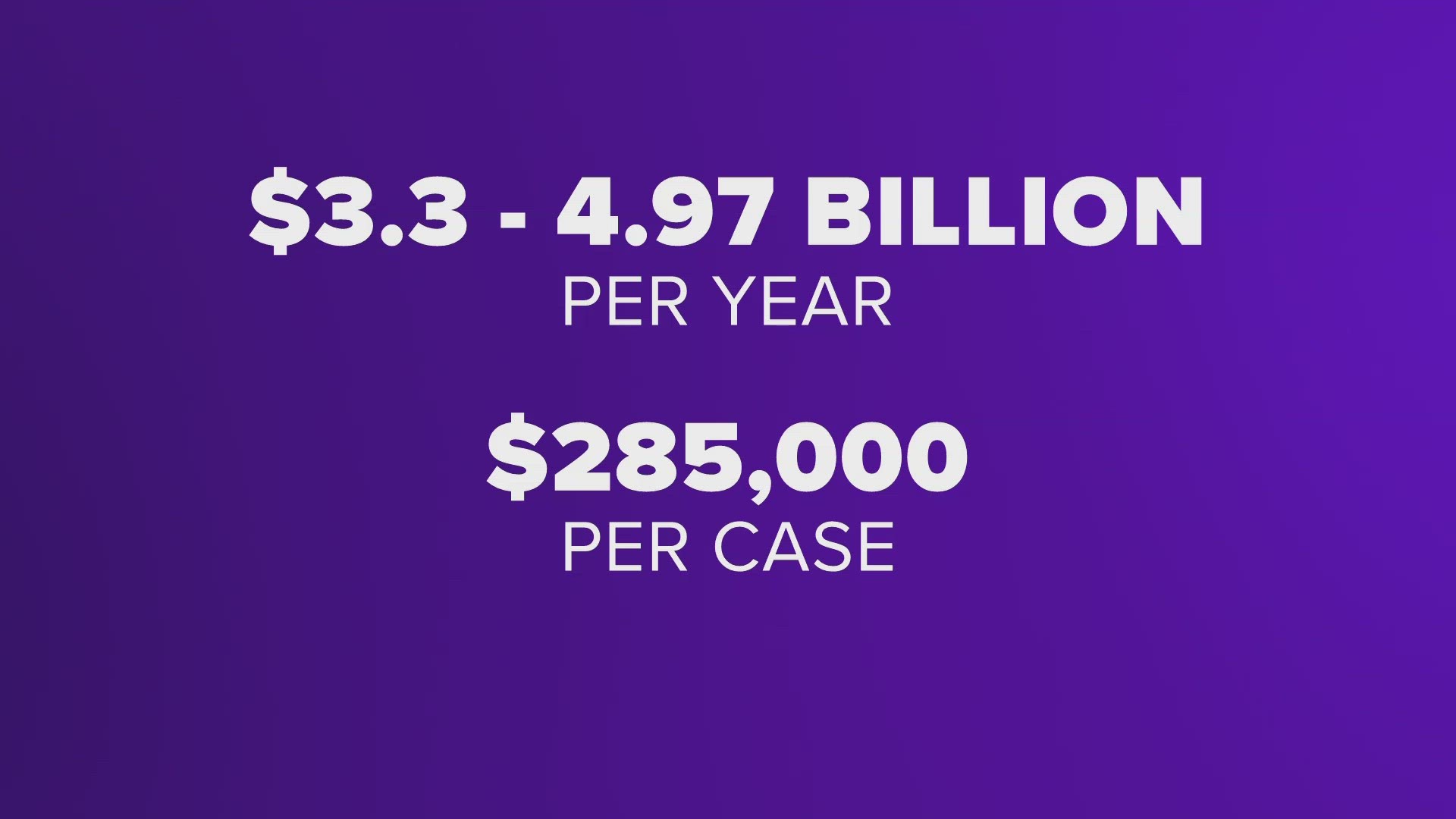KNOXVILLE, Tenn. — A new study from the University of Tennessee finds that child abuse and neglect carry significant economic costs in addition to personal and social consequences.
There's a one-in-eight chance that a Tennessee-born child will become a victim of abuse or neglect before adulthood, according to the study.
The Economic Impact of Child Abuse and Neglect in Tennessee by the Boyd Center for Business and Economic Research in partnership with the Tennessee Commission on Children and Youth’s Second Look Commission, finds that the lifetime cost of child abuse is over $285,000 per case. Per year, child abuse costs the state between $3.33 and $4.97 billion, according to the study.
This includes the cost of child mortality and premature adult mortality, decreased wages and workforce productivity in adulthood among survivors, increased medical costs both in childhood and adulthood, increased demands for special education, residential care costs of dependency and juvenile delinquency and the cost of criminality in adulthood, the study said.
Efforts to prevent abuse and help victims recover will decrease these costs and yield a lifetime of benefits including greater labor force participation, improved population health, decreased rates of substance use disorders, lower incarceration rates, reduced demand for state services and greater life expectancy.
“Economically, there is a strong case for additional resources being made available to help victims of child abuse and neglect receive therapy and recover,” said Matt Harris, Boyd Distinguished Professor of Health Economics and author of the study. “However, we must acknowledge that therapy and treatment will only partially offset the economic and personal harm done. Since the economic harm from child maltreatment manifests over the individual’s life, so would the benefits from therapy and treatment. Therefore these efforts would need to be viewed as a long-term endeavor from an economic perspective.”
The study divides mistreatment into four types—physical abuse, sexual abuse, drug exposure and neglect—and is categorized as severe or nonsevere. The study focuses only on first-time substantiated victims to prevent double-counting children who are victims in multiple years.
The study also looks at substantiated cases of abuse by Tennessee counties. Half the state counties have over 1% of children becoming first-time victims of abuse each year.
County-level data shows that the total number of victims and the number of victims suffering from severe abuse are higher in more rural counties. Cases involving drug exposure are more prevalent in East Tennessee, while physical abuse is higher in Middle and West Tennessee. Known cases of sexual abuse tend to be higher in rural counties and in border counties—raising concern about human trafficking in Tennessee.
Although DCS receives $1.35 billion in funding from state and federal funding and other sources, most of that money goes toward crisis management, residential placements and foster care, according to the study.
The study says there were 163,465 reports of abuse to Child Protective Services in 2022 and 70,718 cases or assessments were opened based on those initial reports. The CPS budget allows for 832 case managers, but state law allows only 20 open cases per case manager at a time.
Budgetary constraints and the difficulty of detecting child abuse in many cases mean that the number of substantiated cases does not capture the full scope of the problem.
According to the U.S. Department of Health and Human Services, rates of child mistreatment could be three times higher than the number of known cases across the nation.
You can read the study here.

